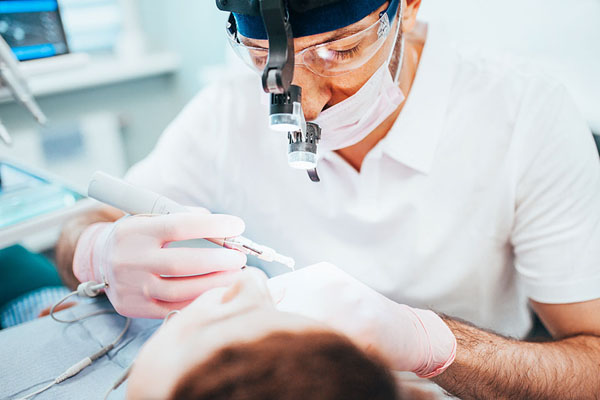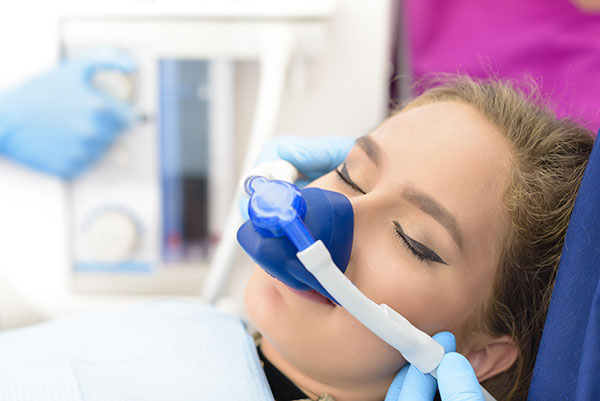Sedation Dentistry: How It Makes Appointments Easy
Sedation dentistry involves the use of medication that helps patients relax and feel comfortable during dental procedures. Dental sedation not only aids in creating a positive dental experience but also enables dental professionals to perform procedures more efficiently, promoting oral health.
Contact our dentist today to learn more about sedation dentistry in Sacramento and to schedule your appointment.

Why Choose Sedation Dentistry?
The primary objective of sedation dentistry is to induce a relaxed state in the patient while ensuring they’re conscious and able to respond to cues from the dentist. This calming effect happens through various medications that depress the central nervous system’s activity. The medication used for sedation can range from mild to moderate, depending on the patient’s needs and the complexity of the procedure.
Types of Sedation Dentistry
Sedation dentistry offers a spectrum of options to cater to different anxiety levels and patient preferences. Here are the most common types of sedation dentistry:
- Oral Sedation: Oral conscious sedation involves mild sedatives, such as oral medication. Patients remain awake and aware, experiencing reduced anxiety.
- Nitrous Oxide Sedation: Commonly referred to as “laughing gas,” nitrous oxide is inhaled through a mask placed over the nose. It induces relaxation and euphoria, and its effects wear off quickly after the procedure.
- IV Sedation: Administered intravenously, IV sedation allows for deep relaxation. Patients may not remember much of the procedure afterward. It’s often used for more extensive treatments. With deep sedation, patients are on the brink of consciousness and can be awakened when necessary. However, they’re unlikely to remember the details of the procedure.
- General Anesthesia: Reserved for complex procedures, general anesthesia renders the patient completely unconscious.
- Local Anesthetics: While not a form of sedation, local anesthetics have pain-relieving properties that are important in dentistry. This technique involves injecting numbing medication into the treatment area, ensuring you remain pain-free throughout the procedure. It’s commonly used alongside minimal or moderate sedation to provide a well-rounded comfort experience.
The Sedation Dentistry Process
Health Assessment
Before administering sedation, our Sacramento dentist will thoroughly evaluate your medical history, current health status, and any medications they may be taking. This assessment helps determine the most suitable sedation method and dosage. If your sedation appointment is on a different day, our dentist will provide pre-appointment instructions.
Administration
Once you’ve chosen the appropriate sedation, you’ll either begin your treatment or return to the dental office for your appointment. Your dentist will then administer the chosen method of sedation. However, if you choose oral conscious sedation, you’ll likely receive it in a pill or liquid form to take at home before arriving.
Monitoring
Regardless of the sedation method, our dentist and team will continuously monitor your vital signs, including blood pressure, heart rate, and oxygen levels, to ensure their safety throughout the procedure.
Procedure
Once you’re adequately sedated, the dentist can perform the necessary dental work. The patient remains comfortable and relaxed during this time.
Recovery
After the procedure is complete, you’ll be monitored in a recovery area until you’re alert and stable enough to be discharged. The effects of sedation will gradually wear off, but patients may feel drowsy for some time afterward.
Follow-Up
We’ll provide post-sedation instructions, and you’ll need someone to accompany you home as you may still feel the effects of sedation.
Why Choose Sedation Dentistry?
Dental sedation helps put patient’s minds at ease during many kinds of dental appointments. From routine dental checkups and cleanings to dental implant surgery or tooth extraction, sedation dentistry has many options that can reduce anxiety and other symptoms, such as:
- Dental Anxiety or Phobia: Dental sedation is particularly effective for individuals who experience intense fear or anxiety when visiting the dentist. It helps relax patients and makes them feel more at ease during procedures.
- Strong Gag Reflex: Some individuals have a hypersensitive gag reflex that can make dental procedures, especially those involving the back of the mouth, difficult. Sedation can help suppress the gag reflex, making procedures more manageable.
- Low Pain Tolerance: People with a low pain threshold might find dental procedures uncomfortable. Sedation can work in tandem with an anesthetic to enhance pain relief and minimize discomfort.
- Complex or Lengthy Procedures: Lengthy or complex dental procedures, such as oral surgeries, implant placements, or multiple extractions, can be physically and mentally taxing. Sedation ensures patients remain comfortable throughout.
- Inability to Sit Still: Some patients, including children or people with certain medical conditions, may struggle to sit still during a dental procedure. Sedation helps them stay calm and cooperative.
- Traumatic Dental Experiences: Individuals with a history of traumatic dental experiences might associate dental visits with distress. Sedation can help them overcome their fear.
- Sensitive Teeth or Gums: Patients with sensitive teeth or gums may experience discomfort during routine cleanings or procedures. Sedation can help manage their discomfort and make the experience more tolerable.
Frequently Asked Questions
Are there any side effects of sedation dentistry?
While side effects are rare, they can include grogginess, dizziness, nausea, or vomiting. Your dentist will discuss potential side effects with you before the procedure.
How long does the sedative effect last?
The duration of sedation varies depending on the type of sedative used. Nitrous oxide wears off quickly, while oral or IV sedatives might leave you feeling groggy for a few hours.
Is sedation dentistry safe?
Yes, when administered by trained professionals, sedation dentistry is considered safe. Your dentist will carefully evaluate your medical history and monitor you throughout the procedure.
Anxious at the Dentist? Sedation Can Help
Sedation dentistry has transformed how people approach dental care, offering a stress-free and comfortable experience for individuals who previously dreaded dental visits. If you’re someone who avoids the dentist due to fear or anxiety, sedation dentistry might be the solution that allows you to maintain a healthy, beautiful smile without worry.
Contact our Sacramento dental office today at (916) 929-9222 to schedule an appointment.

